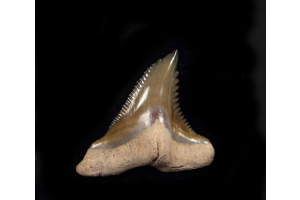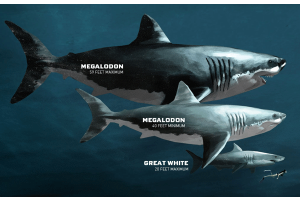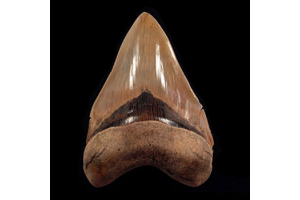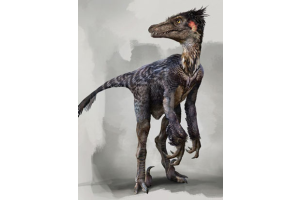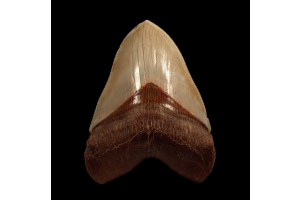
From the murky estuaries to freshwater rivers and coastal seas, the bull shark has long been a subject of fascination for marine biologists and fossil enthusiasts alike. As interest in prehistoric marine life intensifies, researchers are increasingly looking to the fossilized bull shark tooth for answers. This iconic specimen, along with every discovered bull shark tooth fossil, offers an invaluable glimpse into the evolutionary journey of one of the ocean's most resilient predators.
The Bull Shark’s Legacy in the Fossil Record
Carcharhinus leucas, better known as the bull shark, is a fascinating species that stands out from the crowd. What makes this shark truly remarkable is its rare ability to flourish in both saltwater and freshwater environments, which has intrigued researchers for years. This adaptability raises many questions about its evolutionary journey. However, it's the shark's fossil record—especially its teeth—that is starting to unveil secrets about its ancient behaviors, physiology, and the vast regions it once roamed. These insights unlock a window into the life of a creature that continues to thrive against the odds.
Shark teeth, unlike bones that tend to decay, have a remarkable ability to fossilize, thanks to their dense composition. The ones we’ve sourced from the Bahia Inglesa Formation in Chile are truly extraordinary. These late Miocene deposits are famous for yielding some of the most pristine and intricately detailed shark teeth ever discovered. When we first got our hands on specimens like SKU C805, we were immediately captivated by their razor-sharp edges, vibrant colors, and impressive structural integrity. It’s these standout features that not only make them highly sought after by collectors but also provide invaluable insights for paleontologists piecing together the mysteries of ancient ecosystems.
How Researchers Use Fossilized Teeth
The fossilized bull shark tooth holds more data than meets the eye. Researchers now use these fossils to analyze:
● Diet and Prey Patterns: The morphology of tooth structure and patterns of abrasion provide insights into the dietary habits of bull sharks across various temporal phases.
● Migration Routes: The presence of morphologically identical or closely related dental structures across diverse geological strata indicates potential migration patterns and the spatial distribution of habitats.
● Evolutionary Adaptations: Analyzing the morphological characteristics of ancient dentition alongside contemporary specimens enables researchers to gain insights into the adaptive strategies of bull sharks in response to significant climatic and environmental changes over time.
This growing body of research is elevating the bull shark to a new level of scientific importance. It’s no longer just a fearsome apex predator—it's a key to unlocking climatic and ecological histories.
A Surge in Global Interest
In recent years, we've noticed a sharp rise in requests from institutions and researchers worldwide seeking authentic bull shark tooth fossil specimens. What’s driving this demand? It’s largely due to the increasing recognition of shark teeth as more than just collector’s items. They are essential tools in reconstructing Earth's aquatic history and even assessing modern environmental threats.
Shark teeth from Chile, especially those from the Bahia Inglesa Formation, have become especially valuable because of their exceptional preservation. The fossil we offered under SKU C805 is a prime example—extraordinarily clean, sharp, and well-preserved. Though it’s currently out of stock, we frequently add more teeth to our inventory as demand increases.
Supporting Scientific Discovery at Buried Treasure Fossils
At Buried Treasure Fossils, we are more than a retail platform—we’re passionate contributors to the global fossil research community. Owner Gary Greaser’s journey from youthful fossil hunter to seasoned global supplier is rooted in a deep appreciation for Earth’s ancient stories. We take great pride in curating and supplying only the finest examples of fossil shark teeth, including bull shark specimens, to help advance both private collections and scientific research.
Whether you’re a museum curator, academic researcher, or independent enthusiast, we’re here to help you access fossils that meet both scientific and aesthetic standards. Each tooth in our collection is guaranteed authentic, carefully sourced, and accompanied by detailed origin information. Our commitment to quality and transparency ensures that every fossil we offer supports ongoing research and discovery.
The Enthusiast’s Edge
We understand that the pursuit of shark teeth isn’t limited to academic circles. There’s a growing number of shark and fossil enthusiasts, like ourselves, who collect not just for science but also for passion. That’s why we strive to make our collections accessible to all levels—from seasoned researchers to newcomers just beginning their fossil journey.
Our ever-expanding catalog includes species from around the world, and we’re always eager to help customers find exactly what they’re looking for. If you’re specifically searching for fossilized bull shark tooth specimens, be sure to check back frequently or reach out directly for updates on our inventory. We also welcome questions and enjoy helping collectors build something meaningful and educational.
Conclusion: Shaping the Future Through the Fossils of the Past
The surge in research around the fossilized bull shark tooth reflects a larger trend in marine paleontology—an understanding that the smallest relics often reveal the biggest truths. As fossil researchers continue to unlock the secrets hidden within these ancient teeth, we at Buried Treasure Fossils are proud to contribute by making high-quality specimens available to the world.
From supplying the finest fossils to championing a culture of scientific curiosity, our mission is clear: support the discovery, preservation, and appreciation of our planet’s prehistoric heritage. And as long as there’s a story left in every bull shark tooth fossil, we’ll be here to help tell it.






